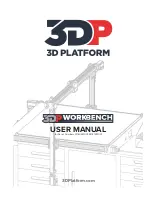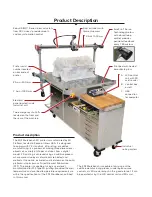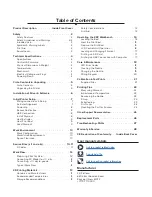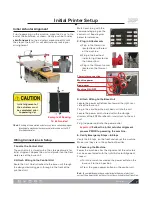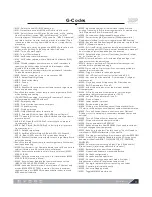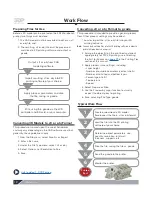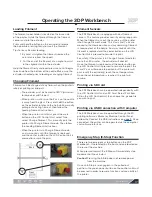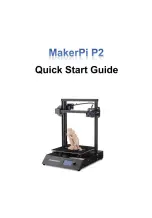
3DPlatform.com
2
Safety Features
The 3DP Workbench printer is designed to comply with
CE standards. All motors are set to recommended safety
standards, with limitation of force applied to each axis
less than 150 newtons. Printers are equipped with the
following safety features:
Safety guidelines & Warnings
The following safety guidelines, as well as the instructions
within this user manual, ensure the safety of the user
while operating and maintaining the 3DP Workbench
printer. If the printer is not operated as specified, the
operator's safety may be compromised.
Installation
• Connect the printer to the safety-certified power
cord supplied with the machine. The electrical outlet
should be near the printer and easily accessible.
• Never connect the printer to an outlet that does not
have a ground wire. Disconnecting the ground wire
may result in electric shock.
Operation
• The 3DP Workbench printer generates high
temperatures in the print nozzle and the print bed—
do not touch when hot. Allow the unit to cool before
touching.
• Do not set objects on the heated print bed. Do not
lean or stand on the print bed. Doing so may cause
injury to the operator.
• Due to high temperature outputs and moving parts,
the location where the printer is operating should be
equipped with working smoke detection and flame
supression.
• The 3DP Workbench printer melts material during
printing. Some materials may require ventilation.
• Do not leave the 3DP Workbench printer unattended
while in operation.
Note:
This equipment does not meet requirements for immunity
according to EN61000-4-2. The destruction of the step servo
motors embedded electronic circuits is possible by application
of electro static discharge.
Safety
1. Y axis bumper protects the
user from collision with the
idle end of the actuator
during printing
2. Wire covers prevent
accidental disconnection
of the motors
3. Two emergency Stop buttons
located on the front and back
of the machine
Keep all items and persons clear of moving
actuators to avoid pinch zones.
Hot Zones
Heat bed, nozzle, and
possible axis / extruder
motors
Unexpected Movement
Pinch Zones

